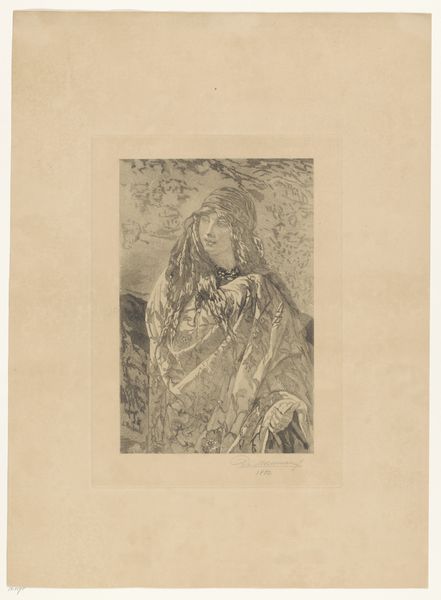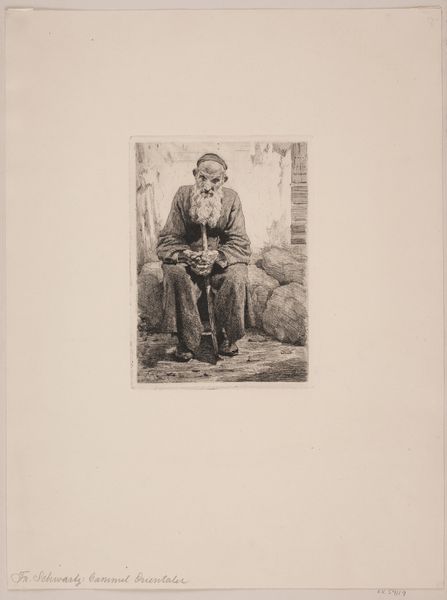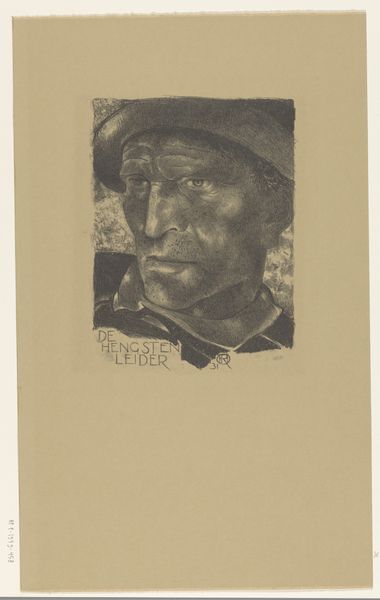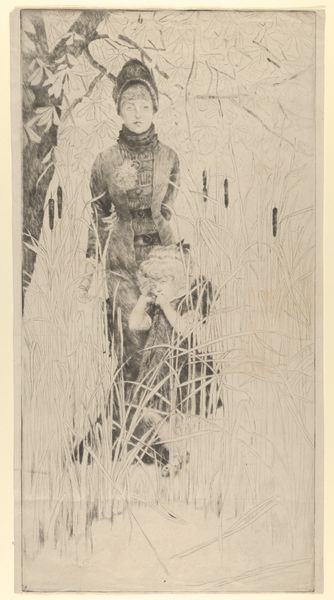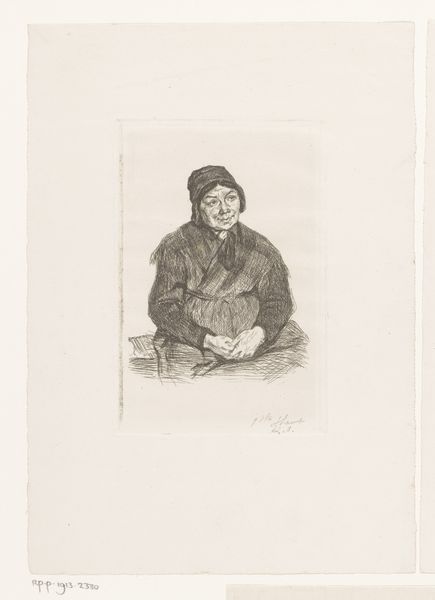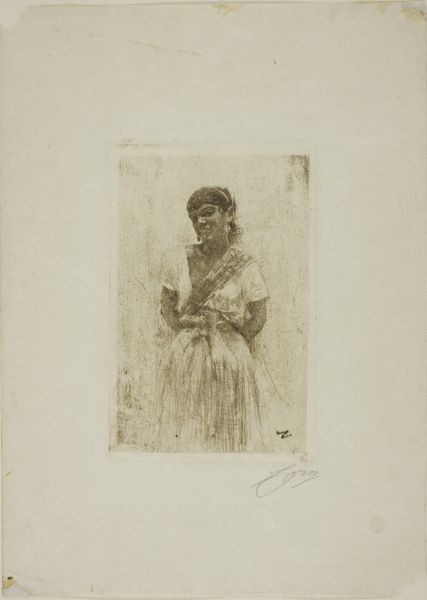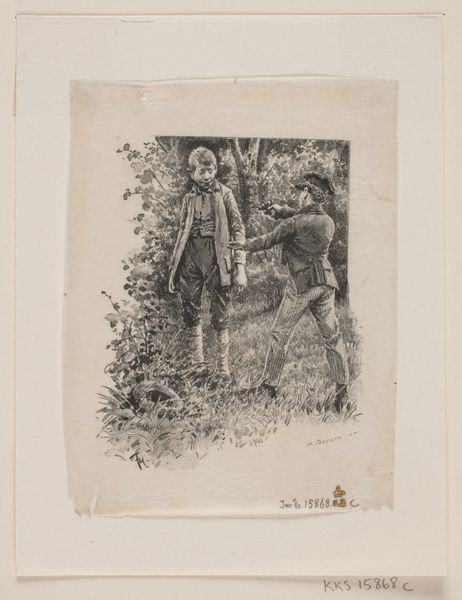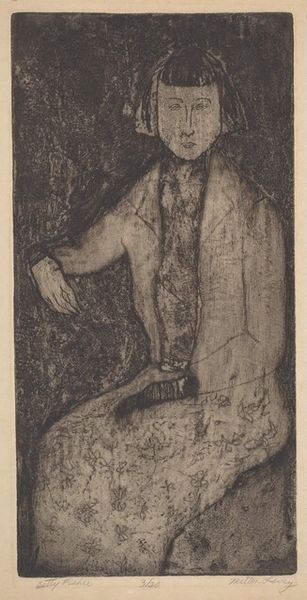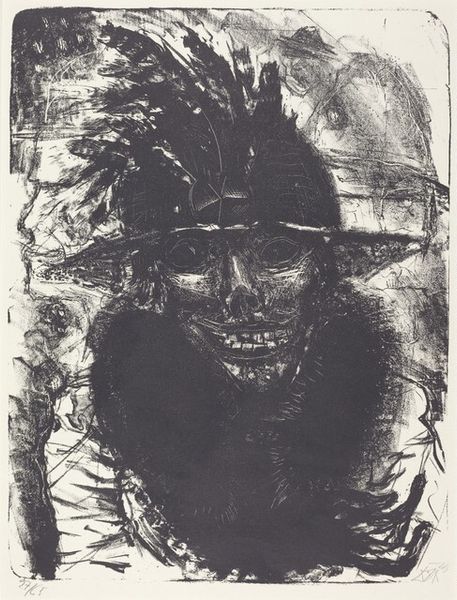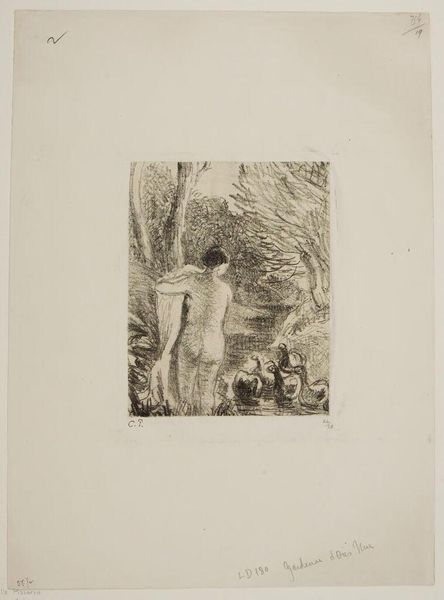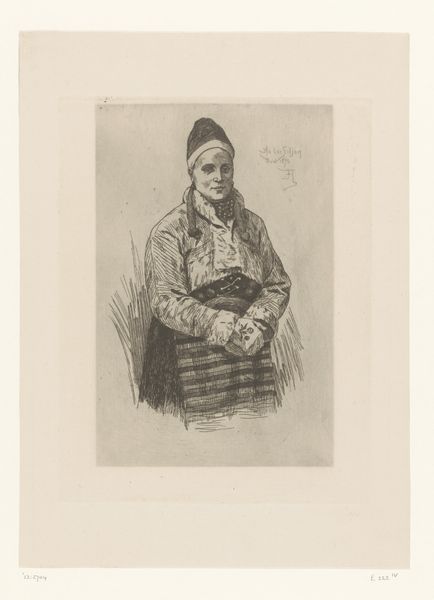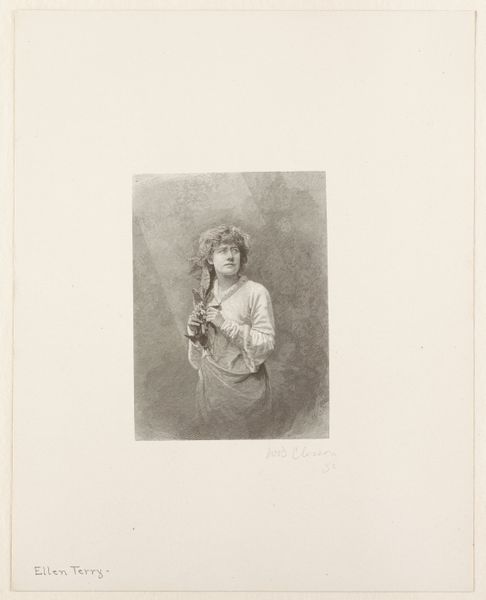
Dimensions: 7 5/16 x 5 3/8 in. (18.57 x 13.65 cm) (plate)10 5/16 x 7 3/4 in. (26.19 x 19.69 cm) (sheet)
Copyright: No Copyright - United States
Curator: Gosh, this image is a puzzle wrapped in sunshine! Editor: Here we have Childe Hassam's etching, "Helen Burke," created in 1917. The work resides in the Minneapolis Institute of Art. It offers a look at turn-of-the-century aesthetics of women’s representation and how their identities were formed. What are your first impressions? Curator: Well, first off, it's so… intimate. Like a stolen moment, not staged. And the light! Even though it’s just black and white, I can feel the warmth on my skin. Does that make sense? Editor: Absolutely. It's interesting that you focus on the intimacy. While on its surface it’s just a portrait, it could speak to shifting ideals around femininity. We see Helen Burke portrayed in an outdoor setting that promotes the figure's supposed integration with nature, but such integration might also come with an implication that women's potential remains somewhat tethered to the natural environment. Curator: Whoa, heavy. I just thought she looked comfy and like she was about to tell me a secret. The soft lines Hassam uses… it's like he's sketching a memory. The way the foliage is depicted sort of suggests a quiet surrounding. Editor: It also subtly constructs an ideal about the feminine experience, using elements of "naturalness" to affirm that such feminine integration into the pastoral sphere somehow justifies historical constraints on social equality. How would her expression then shape this impression? Curator: Her expression... it’s gentle, but there's a bit of defiance in her eyes. It makes one consider her individuality versus being an "ideal woman." Editor: Precisely. The layering of impressions is what etching can be capable of delivering. By acknowledging this, we not only deepen our appreciation for the art but also question the underlying frameworks. The representation here promotes critical dialogue regarding identity formation in those historical contexts. Curator: I love that! Next time, though, I’m bringing my detective hat *and* my sunscreen. Editor: As we close, "Helen Burke" by Childe Hassam encourages us to explore the artistic ingenuity and layers of historical dialogue imprinted into the very essence of our being.
Comments
No comments
Be the first to comment and join the conversation on the ultimate creative platform.
